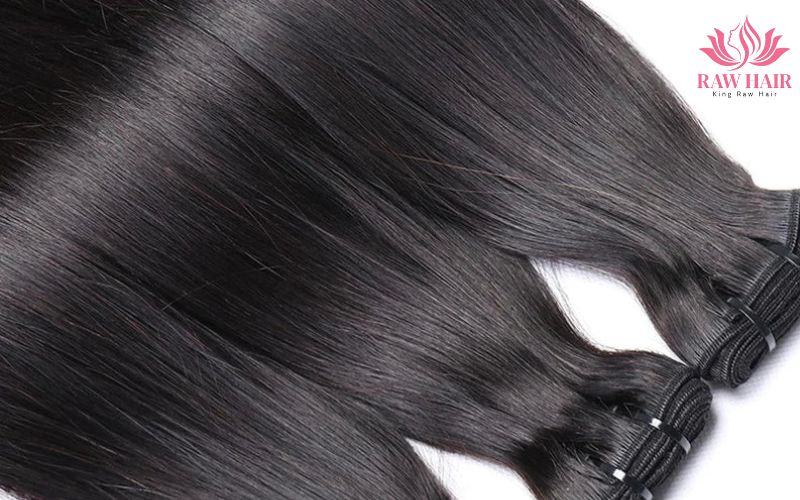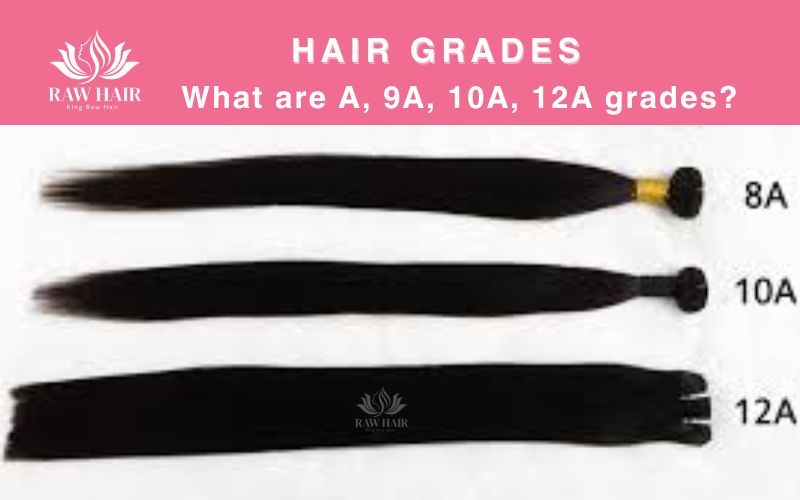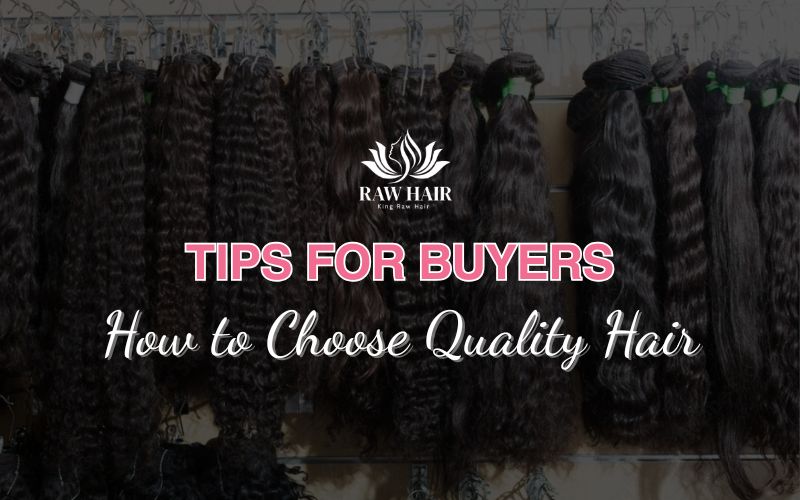Blog
Hair Grades Explained: What Are A, 9A, 10A, 12A Grades?
If you’ve ever shopped for human hair extensions online, you’ve probably come across grades like 8A, 10A, or even 12A. These labels are used by hair vendors to indicate the quality of the hair — but what do they really mean? Unfortunately, hair grading is not standardized across the industry, which can make it difficult for buyers to know exactly what they’re getting.
In this guide, we break down what each hair grade typically represents, what to look out for, and how to make smarter purchasing decisions — especially when buying premium Vietnamese hair bundles.
What Does Hair Grading Mean?
Hair grading is a marketing and classification system created by manufacturers and hair vendors to indicate the overall quality of human hair bundles. While there is no universal grading authority, the system gives customers a general idea of what to expect – especially in terms of durability, appearance, and styling capabilities.
Grading typically takes into account several key factors:
- Cuticle alignment: Whether the hair strands have intact cuticles facing the same direction. Proper alignment reduces tangling and increases smoothness.
- Strand thickness and uniformity: High-grade hair tends to have consistent strand thickness from top to bottom, which results in a fuller, healthier look.
- Fullness of length (single vs. double drawn): Single drawn hair contains varied lengths, while double drawn hair has more even-length strands, making it appear thicker throughout.
Chemical processing: Lower-grade hair may be heavily processed, while - higher-grade bundles are often virgin or minimally treated, retaining their natural structure.
- Performance when styled: Higher grades are more resilient to heat tools, coloring, and frequent washing.
The higher the grade, the higher the quality — in theory. But remember: since grading isn’t regulated, two bundles labeled “10A” from different suppliers may vary significantly in actual quality.
Understanding Common Hair Grades from 5A to 12A
Hair grades are often used as shorthand for quality, but because there’s no official global standard, it’s important to understand what each level typically represents. Here’s a simplified breakdown:
- 5A – 6A: Low-grade hair, often mixed with synthetic or non-Remy strands. Cuticles may not be aligned. Prone to tangling and shedding. Short-term use only.
- 7A – 8A: Entry-level Remy hair. Cuticles are aligned, allowing for minimal tangling. Good for basic styles and short-term wear. Can handle limited heat and color (dark tones).
- 9A: Better quality Remy hair with more full-length strands. Thicker, longer-lasting. Can be dyed to lighter colors like #27 (strawberry blonde).
- 10A: High-end Remy hair, usually double drawn. Fuller from root to tip. Can be bleached to light blonde (#613) and styled frequently.
- 12A: Premium raw or virgin hair. Sourced from a single donor, with cuticles intact. Thick from top to bottom, ideal for repeated dyeing, styling, and long-term use.
Note: Labels like 13A or 15A are often just marketing tactics — not real indicators of better quality.
What Matters More Than the Grade
Since grading isn’t standardized, smart buyers look beyond labels to assess true quality. Here are the key factors that matter:
- Remy status and cuticle alignment: High-quality Remy hair has cuticles intact and aligned in one direction, which prevents tangling and maintains a natural look.
- Hair origin and donor consistency: Hair from a single donor tends to be more consistent in texture, making it easier to style and blend. Mixed-donor hair may vary in thickness or wave pattern.
- Raw vs. processed: Raw hair is completely unprocessed, offering the longest lifespan and best performance under heat and color. Processed hair may look nice at first but often loses quality quickly.
- Real-world performance: Always consider how the hair responds to bleaching, heat tools, or multiple washes. Good quality hair should remain soft, manageable, and tangle-free over time.
Tips for Buyers: How to Choose Quality Hair
Hair grades can be helpful, but they shouldn’t be your only guide. To make sure you’re truly investing in quality bundles, especially if you’re running a hair business or planning to use the hair long-term, keep these tips in mind:
- Ask for videos or close-up photos of the actual product. Don’t rely on catalog images. Ask to see movement, thickness, and texture.
- Request samples before bulk ordering. This is especially important if you’re testing a new supplier.
- Check for cuticle alignment. Run your fingers down the strands — the hair should feel smooth in one direction and slightly coarse in the opposite (a sign that cuticles are intact).
- Read verified reviews and buyer feedback. Look for photos and honest experiences from real customers — especially regarding shedding, tangling, and longevity.
- Look for double drawn bundles if you want fuller ends. These are more expensive but give a more voluminous and consistent look.
- Avoid heavily processed hair if you plan to dye or bleach it. Choose raw or minimally processed Remy hair for best results.
- Go with trusted hair origins. Vietnamese hair is known for its strength, natural shine, and durability. It performs well under styling and coloring and is a smart choice for premium results.
Buying hair is not just about price – it’s about value. Choosing the right vendor and product means fewer returns, fewer disappointments, and happier customers or results for yourself.
Hair grades can serve as a rough guideline – but they are not a guarantee. The real measure of quality lies in how the hair looks, feels, and performs over time. Educate yourself, ask the right questions, and always test before you trust.
If you’re still unsure which grade or type of hair is right for your needs, don’t hesitate to reach out. Our team at Hair Vietnam is here to help you make the most informed choice possible – whether you’re a first-time buyer or a seasoned reseller.
Contact us today for personalized advice and support, or explore our full collection of premium Vietnamese hair at Rawhair.vn.









